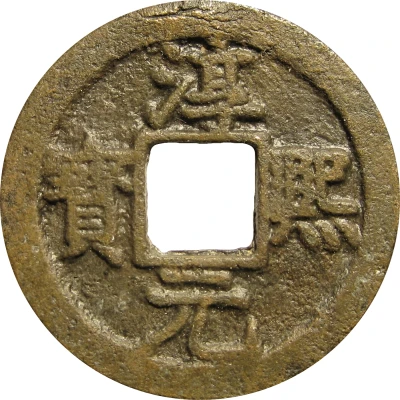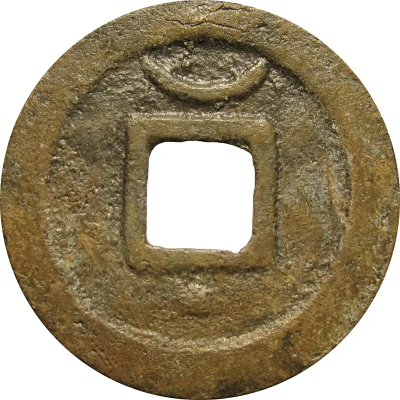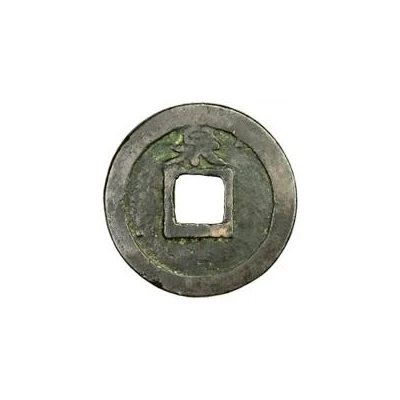2 Cash - Chunxi Yuanbao; Regular script; Zheng ND
| Bronze | 6.86 g | 29 mm |
| Issuer | Empire of China |
|---|---|
| Emperor | Southern Song dynasty › Xiaozong (宋孝宗) (1162-1189) |
| Type | Standard circulation coin |
| Years | 1174-1179 |
| Value | 2 Cash |
| Currency | Cash (621-1912) |
| Composition | Bronze |
| Weight | 6.86 g |
| Diameter | 29 mm |
| Shape | Round with a square hole |
| Technique | Cast |
| Orientation | Medal alignment ↑↑ |
| Demonetized | Yes |
| Updated | 2024-10-03 |
| Numista | N#217179 |
|---|---|
| Rarity index | 100% |
Reverse
One Chinese ideogram below.
Script: Chinese (traditional, regular script)
Lettering: 正
Translation:
Zheng
[Uncertain mint]
Edge
Plain
Comment
In 1180, numbers were added to the reverses to indicate the year of issue (which was said to reduce the amount of illegal casting). Presumably, coins without years were cast before the numbers were added.It is uncertain which mint used this mintmark. With this mintmark appearing on both iron and bronze pieces, it is possible these coins were produced at the Old Yidu Mint in Sichuan, which likely casted both compositions after it reopened in 1129.
The Old Yidu Mint diffinitely casted bronze pieces, which had the mintmark Chuan for Sichuan. And with this being a Sichuan mint, it is possible this mint also produced iron pieces. While this mint's old mintmark was Chuan, that was back in 1129-1130. With that being so many years ago, they may have changed their mintmark for an uncertain reason (possibly wanting something less generic than a mark for Sichuan).
Interesting fact
One interesting fact about this coin is that it was issued during the reign of Emperor Zhangzong of the Jin dynasty, who ruled from 1174 to 1179. The coin features the emperor's era name, "Chunxi," in Regular script on the obverse, and the denomination, "2 Cash," on the reverse. The use of bronze as the material for this coin was a common practice during this time period, as it was a readily available and affordable metal. Despite its relatively low value, this coin is a valuable piece of history that provides insight into the economic and political climate of ancient China.



